We love our fences in California, but the wrong type of fence can really leave a bad impression. When a fence is too tall, resembles prison bars, obstructs the view of the house, is plain ugly or screams “leave me alone”, it’s probably not enhancing the image of the neighborhood. There are many reasons why fences exist, but regardless of the reasons, when a community grows to have numerous fences like this, it promotes a blighted feel.
 Please don’t misunderstand me. I’m NOT saying you are causing blight in your community if you have a certain type of fence. I’m only saying the way houses look communicate something to the rest of the neighborhood, make a reflection upon the entire community and ultimately impact property value. As much as we like to think we live on parcel islands, the truth is what we do (or don’t do) to the front of our parcels impacts how others view the neighborhood. If you don’t believe neighborhood presentation can influence the way others feel about the community, read a case study of Diggs Town Public Housing.
Please don’t misunderstand me. I’m NOT saying you are causing blight in your community if you have a certain type of fence. I’m only saying the way houses look communicate something to the rest of the neighborhood, make a reflection upon the entire community and ultimately impact property value. As much as we like to think we live on parcel islands, the truth is what we do (or don’t do) to the front of our parcels impacts how others view the neighborhood. If you don’t believe neighborhood presentation can influence the way others feel about the community, read a case study of Diggs Town Public Housing.
Removing or changing the type of fence may not erase the blight label from a neighborhood, but it is often one cog in the system. Blight is a complex reality that occurs over time, so beginning to breathe life back into a community involves removing characteristics that send a negative message and adding features that are more welcoming. I know design is a very subjective thing, but people’s feelings are too. If we want to see property values increase, people need to feel good about the neighborhood.
How do you think fences can help shape the image of a community? What factors would you say contribute to a blighted feel for a neighborhood? Which fences below seem welcoming and evoke friendliness? Which designs may give off a negative vibe?
This is post # 2 in the “Blight Week” series on the Sacramento Appraisal Blog.
If you liked this post, subscribe by email (or RSS). Thanks for being here.
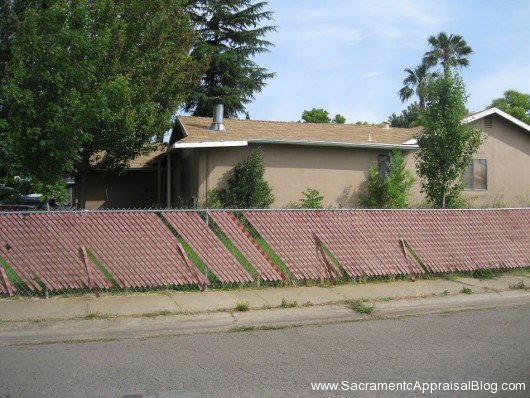
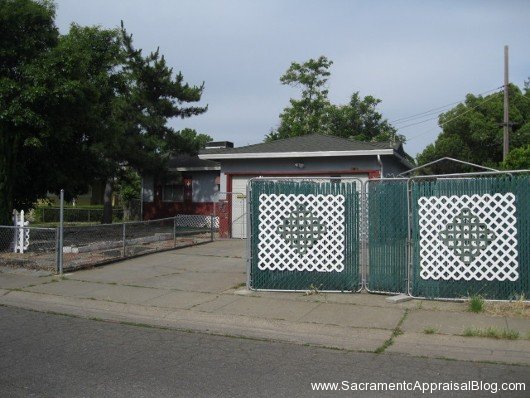
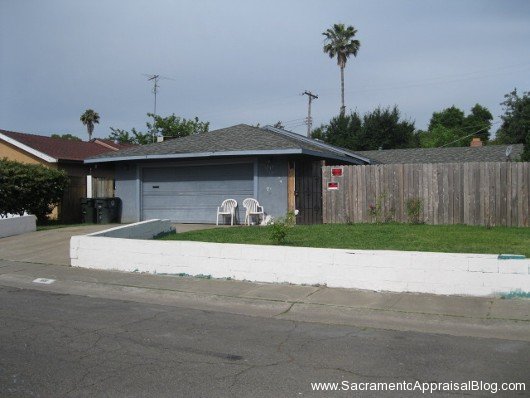

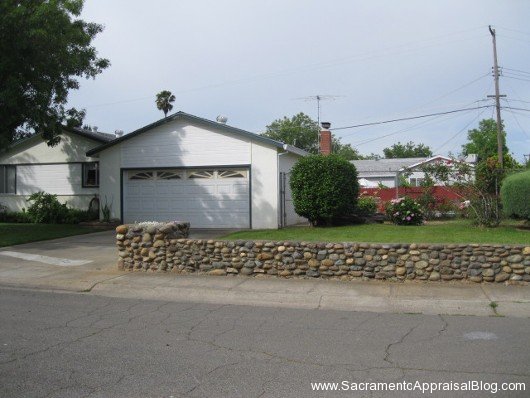
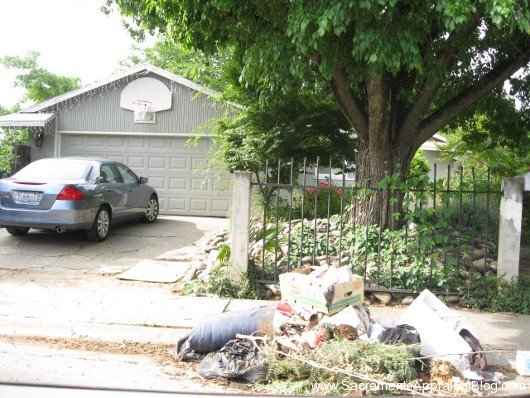
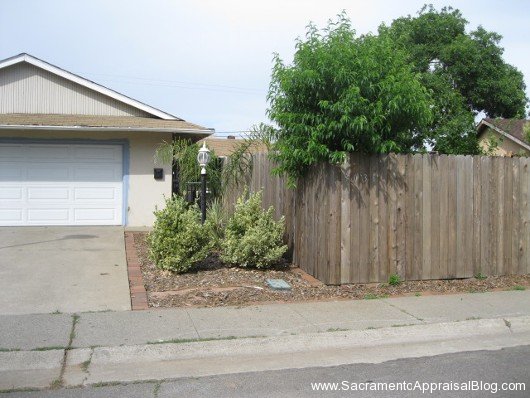
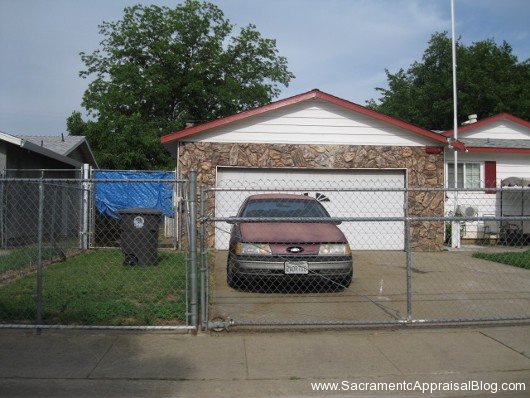

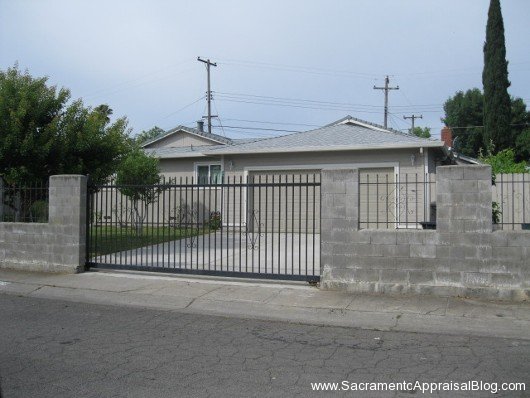
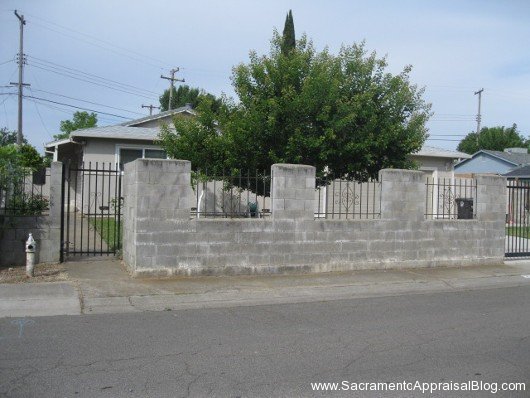




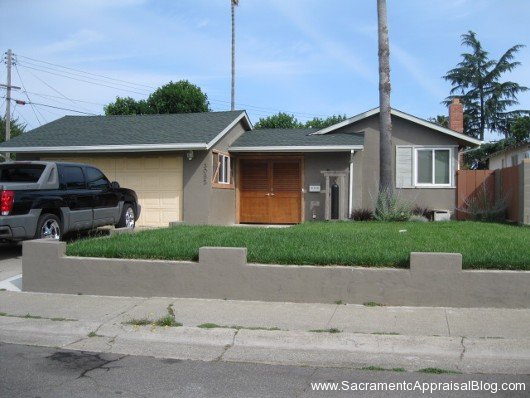

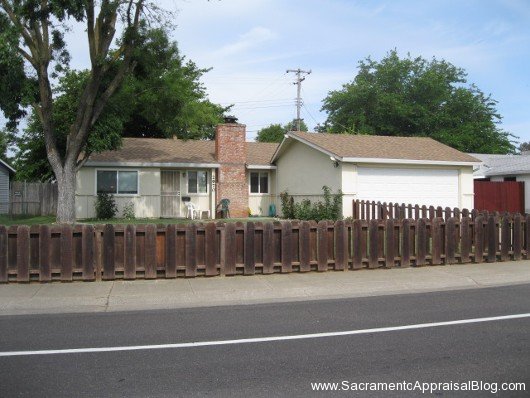










I completely agree! Fences (and design, in general) certainly say something about a place. To me, the difference between a “cute” picket fence and chain link is vast. The bottom line, for me, is what a fence says about safety.
Fences that appear to be for security can indicate that security is something about which to be concerned. In other words, when I see a gated driveway or bars on the windows, I assume there is some legitimate threat in the area. I assume residents are worried about safety, and as a visitor or prospective resident, I assume I should also worry about safety.
On the other hand, a “cute” little picket fence may be a landscape feature when paired with well maintained plantings. In that case, the fence demonstrates a sense of pride in the resident for his home or, further, his neighborhood.
I think both fear and pride are contagious elements of a neighborhood’s culture, and fences have a lot to do with how properties and neighborhoods communicate that culture to residents and visitors alike. This is an excellent topic for “blight week!”
Excellent thoughts, Shannan. Thank you for sharing. I like how you said, “I think both fear and pride are contagious elements of a neighborhood’s culture.” I think it’s so easy for a neighborhood to get into a rut too where it becomes common for very low-grade fences and the types of fences that say “stay out”. It’s understandable on some levels if there is rampant crime, but when we see fences as such it is often a reminder that the neighborhood has experienced decay over time and there is a bigger issue to address. It’s as if the fence is a symptom of a deeper problem needing to be dealt with. The case study I linked to in the post is very profound. I love how simple design changes were made to an entire neighborhood and it really helped to transform the community.
Chain link on adjacent properties is an immediate “pass” on my investor evaluation sheets. If it is only on the property I’m evaluating, I include removal cost in the deducts.
Wow, Jeff. That is very telling. I’d be curious to hear more on why it is a “pass” if the property next door has a chain link fence. Do you feel that buyers would be less likely to pay top dollar for a property or rent next door to a house with a chain link fence?
Chain link fencing isn’t elegant like a gated/guarded community entrance, but it works very well.
Remember the Night Stalker serial killer from LA? He didn’t go into the Hispanic neighborhood nearby and attack people sleeping in their beds – he went to the neighborhood with the cute picket fences or no fences at all. He knew he the fences of the first neighborhood held guard dogs inside their yards.
I believe that taking down the chain link fence improves the property values and neighborhood perception, but the residents would rather have themselves and their belongings safe from what’s roaming at night moreso than a higher resale value someday in the distant future that was offset by all the burglaries in the meantime.
Now otoh, in the Midwest, it’s not common to fence the backyard – step outside and you can see all your neighbors backyards on the block – it’s really neat. I wish more Californians would tear down their back fences and open up the block. Plus, removing the fence is safer – you can’t see if someone jumped it and is busy breaking in through your neighbor’s back door.
I remember the “Night Stalker”. I lived in Southern California then and it was a very scary time. People were really freaked out. My Dad lived in the beach cities and once Ramirez killed someone in Mission Viejo (if I remember correctly), he actually moved his bedroom upstairs instead of down. It was frankly a feeling of relief when he was caught. I wasn’t very old at the time, but that was really big news.
Thanks for the thoughts, Anne. I think you’re right about the property value angle, and I think you’re insightful about why the exist. However, I wonder if they exist sometimes too simply because they are more of a habit. Some neighborhoods really do need a fence because they are a war zone (but fences don’t stop bullets). It seems like most of the fenced areas in Sacramento though do not need this type of protection. It would be far better for residents to remove the fences and band together if they really want to see a safe community. An ugly chain link fence won’t protect you at night, but an active Neighborhood Watch on your street will do far more than any fence in my opinion. We try so hard to keep people out of our lives with fences, but it just doesn’t ultimately work.
Great thoughts. Good discussion. I smell a blog post coming on really soon and I think you’re probably going to have something to say about the topic. 🙂
Pit Bull and Rottweiler guard dogs can jump or break through most wood and picket fences, that’s why they use steel fencing…and plus it’s cheap and very durable and they can’t afford to replace the whole fence every 8-10 yrs.
Neighborhood Watch is wonderful and every neighborhood should have one. But when there’s a steady stream of cars and people going past your house all day/all night, it’s hard to tell who’s the good guy and who’s not. In their case, a strong fence and a guard dog are the most effective and lease-expensive tools.
Quieter neighborhoods have the advantage of less traffic and its often easier to spot the non-residents cruising through.
I’m looking forward to the day they started building new houses with old-fashioned picture windows that face the street, it’d be even more effective. There aren’t many people standing on their 2nd floor landing looking outside at night, are there? Or maybe they’re squeezed behind the end table and lamp and peeking out through the parlor windows? Today’s architects tend to put all the focus on the backyard and so they put lots of windows in the back of the house.
I’m pro-not being attacked in the middle of the night, pro-being safe in your home and pro-home security while you’re away – and in some cases and in some places, a big strong steel fence is an asset.
I’m looking forward to your next blog – might you be announcing that you’re running for a seat on the Citrus Heights city council? 😉
I hear you, Anne. But the only way to deal with the steady stream of people and cars is to band together as a neighborhood. Drugs and crime will never go away unless neighbors do something about it. There is no other answer. Fences and dogs are helpful of course in promoting personal security, but their existence is only symptomatic of the depper problems in the community – isolation, fear and a perceived or real lack of safety. Fences and dogs are really only a bandaid to the problem anyway as they do not promote any real longterm solution to the issues in the community. If everyone simply thinks on the short term, then nothing can ever be solved and the neighborhood can never break out of the cycle of decay and find a sense of rejuvination.
I would never judge someone for putting up a fence or having a guard dog, but the real solutions to fighting crime have very little to do with dogs and fences. The principles of Neighborhood Watch are absolutely necessary to decrease blight and pave the way toward a better community. Residents must get to the point where they say, “We’ve had it. No more. It stops here. We will not put up with this garbage any more and we’ll do whatever it takes to see change.” So change happens with the way residents interact with each other, report crime, work with local PD and City Hall, and also properties start getting cleaned up (lawns mowed, houses painted, cars off the lawn, fences removed, flowers planted…).
There was a great case study I linked to above to show how a ghetto changed drastically after some of the typical ghetto features were addressed. It’s actually a pretty remarkable read and it reminds me if something looks like it’s not taken care of, that’s exactly how it will be treated. http://www.knowledgeplex.org/showdoc.html?id=2014
Such good thoughs, Anne. Thank you. I always appreciate conversation with you and I feel pumped up to bring change too. Regarding City Council, I live in Rancho Cordova, and I would consider running some day (though not right now).
I’d totally support your City Council candidacy, Ryan. And I feel you’d be very effective in addressing the root cause of the crime and drug dealing issue and its associated blight.
The Bible says we must build our house upon a strong foundation. The people living behind chain-link fences don’t have strong social foundations so they too often slip into idleness, boredom, addiction and crime.*
“A good job and a strong family is the best health and human services program.”
Bring back the jobs – bring back the hope – certain groups of people have very little of either.
*some crimes shouldn’t be crimes at all (prohibition laws and drug addiction) and some non-crimes like emptying the pension plans of your constituents based on inside trader information and getting away with it, like they do in our Congress, should be outlawed. Throwing people into needless poverty should be a crime but it’s not if one’s been elected to their job.
Thanks, Anne. Poverty is such a complex issue. It’s a generational thing too. There are no quick fixes, but there is a need for serious family and grassroots neighborhood action to get results. There is a need for a reshaping of identity and values. Throwing money at something doesn’t change the way people think. There is hard work ahead and so much we need to do. I think the important thing is that all residents make a decision to put their hand to the plow and be a part of the solution. That is where change begins. Great conversation, Anne. You’re the best!!
You’re so right about better spaces fostering better behavior – no one leaves their towel on the floor of the women’s room at Nordstrom – but it’s a different scene inside K-Mart’s!
Maybe as City Councilman, you could create a lot of jobs and pay people to run around and paint and fix neighborhood blight… that’d solve both problems 🙂
Yes, there is a totally different feel between Nordstrom and K-mart (or Walmart). There is a different expectation because there is a different quality and set of values surrounding the establishments. If neighborhoods thought of themselves as Nordstrom rather than Walmart, it would make a huge difference. The neighborhood has to take responsiblity for its existence and reclaim a vision for their community. Somewhere along the line the neighborhood gave up, so it needs to start fighting again (in a positive sense).
Jobs would be awesome. We sorely need those in the Sacramento area. It’s hard to imagine a turn-around in our economy and housing market until jobs really come back. Ah, it would be so nice if we could just get unemployment down to 8% instead of 10%+. 🙂
Ryan, you have a good heart and you care a lot about people and for your community – those are admirable qualities. And I’m honored to know you 🙂 You got my vote!
That’s nice of you to say, Anne. This whole discussion and your comment reminds me of how residents in older neighborhoods really have so much to give. For a number of reasons, the neighborhood has fallen into disrepair and things just aren’t what they were years ago, but residents are so full of life, stories, talent and they carry a sense of history for the community. It seems in many cases it’s just a matter of getting back in touch with that history and helpng the neighborhood get back to what it used to be. There are so many veterans and people who have given for many decades too in neighborhoods like this. I could go on and on. Time to get back to work. 🙂